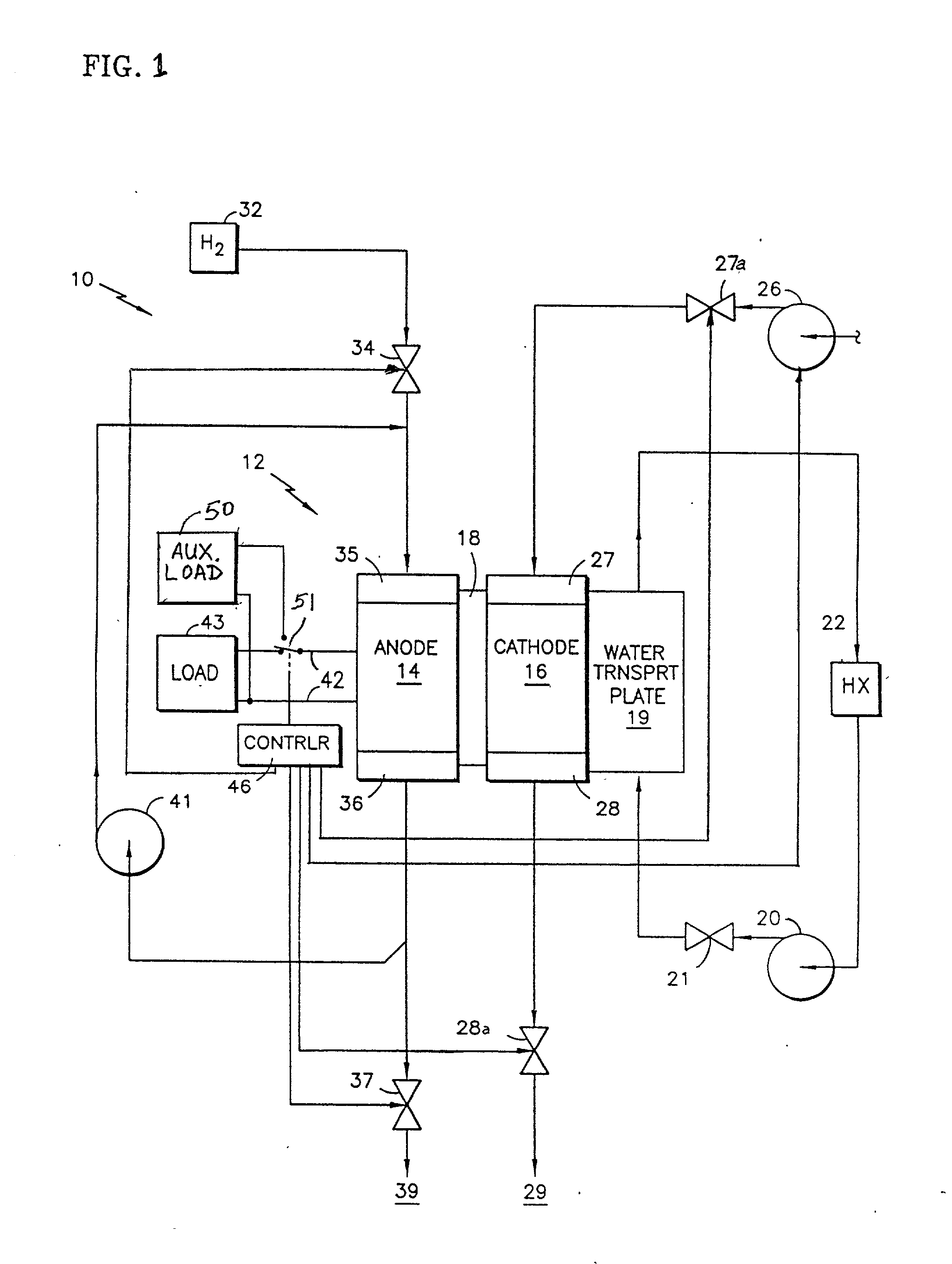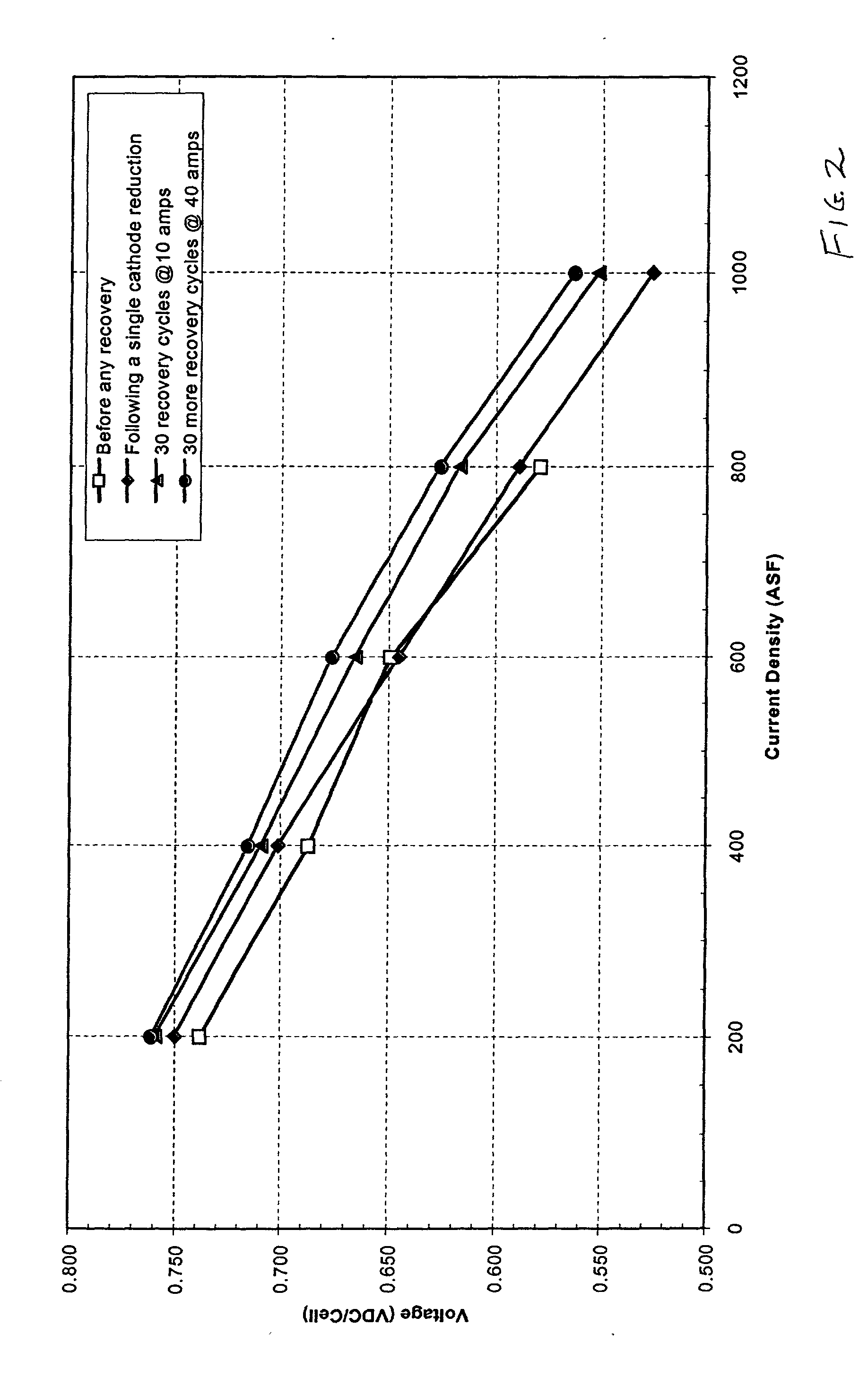Fuel cell performance recovery by cyclic oxidant starvation
a technology of cyclic oxidant and fuel cell, which is applied in the direction of cell components, electrochemical generators, cell component details, etc., can solve the problems of performance decay, reduced output voltage at any given current density, and worse decay rate following such rejuvenation procedures, so as to improve the regeneration of fuel cells the effect of reducing the time required
- Summary
- Abstract
- Description
- Claims
- Application Information
AI Technical Summary
Benefits of technology
Problems solved by technology
Method used
Image
Examples
Embodiment Construction
[0013] Referring to FIG. 1, a fuel cell power plant 10 includes a cell stack assembly 12 which comprises a plurality of individual fuel cells stacked together in contiguous relationship, although only a single cell is illustrated in FIG. 1. Each fuel cell 12 includes an anode compartment 14, a cathode compartment 16, and a polymer electrolyte membrane 18. The anode compartment contains an anode and an anode flow field which are not shown. The anode consists of a catalyst adjacent to the polymer electrolyte membrane and a porous support plate all of which are known. The cathode compartment contains a cathode and a cathode flow field which are not shown. The cathode consists of a catalyst adjacent to the polymer electrolyte membrane and a porous support plate all of which are known. A water transport plate 19 (or coolant plate), adjacent to the cathode 16, is connected to a coolant control loop including a coolant pump 20, a coolant pressure control valve 21, and a heat exchanger 22. ...
PUM
| Property | Measurement | Unit |
|---|---|---|
| voltage | aaaaa | aaaaa |
| voltage | aaaaa | aaaaa |
| time | aaaaa | aaaaa |
Abstract
Description
Claims
Application Information
 Login to View More
Login to View More - R&D
- Intellectual Property
- Life Sciences
- Materials
- Tech Scout
- Unparalleled Data Quality
- Higher Quality Content
- 60% Fewer Hallucinations
Browse by: Latest US Patents, China's latest patents, Technical Efficacy Thesaurus, Application Domain, Technology Topic, Popular Technical Reports.
© 2025 PatSnap. All rights reserved.Legal|Privacy policy|Modern Slavery Act Transparency Statement|Sitemap|About US| Contact US: help@patsnap.com



